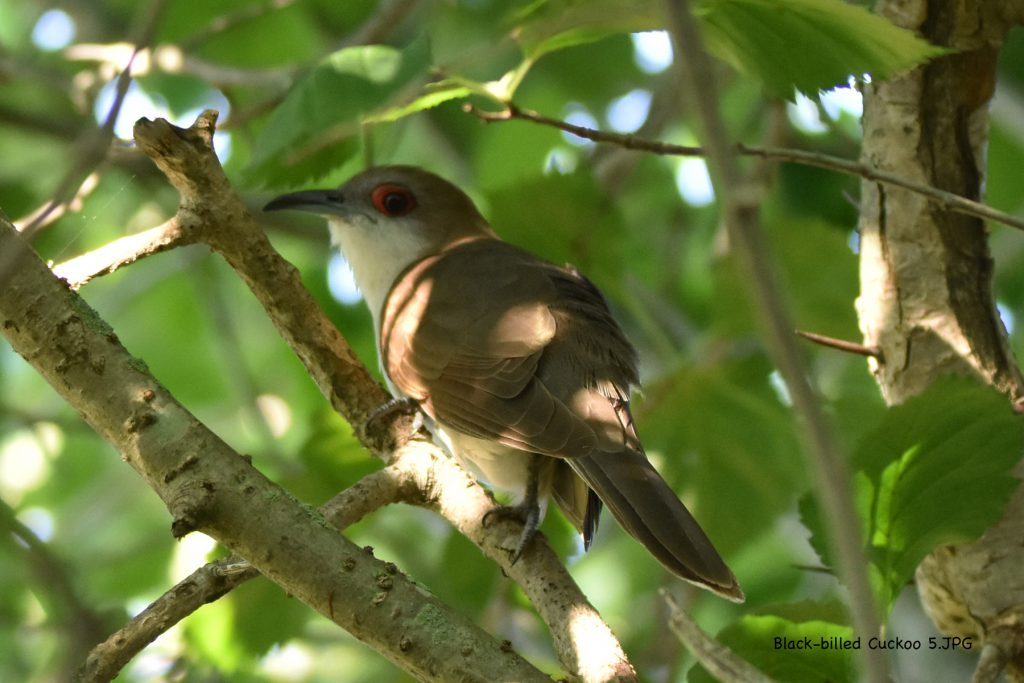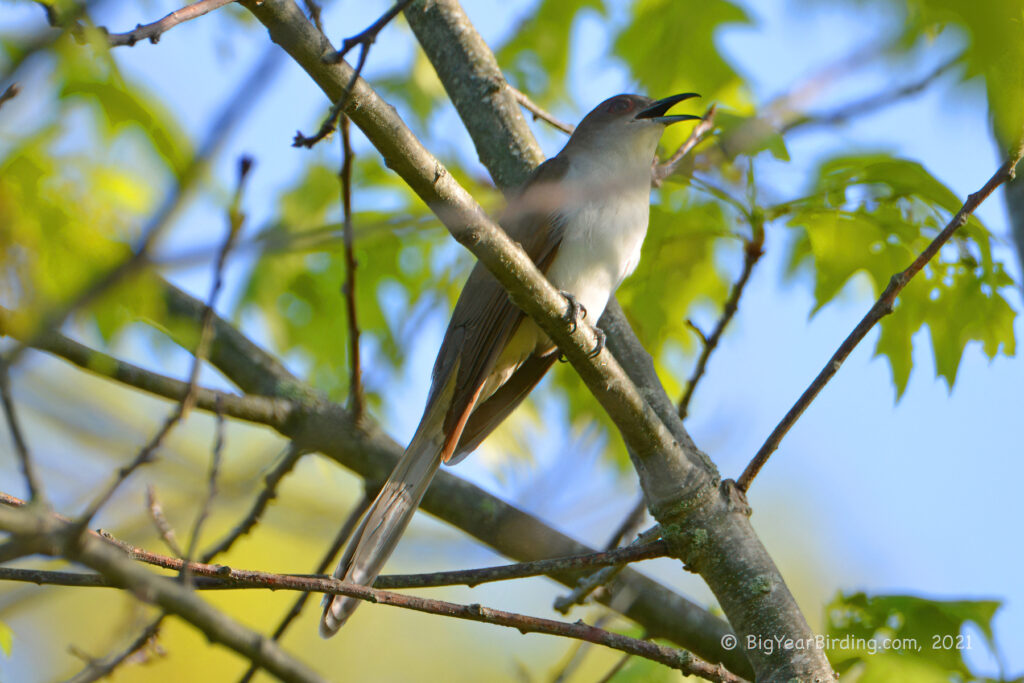
The Black-billed Cuckoo (Coccyzus erythropthalmus) is a medium-sized bird found in North and Central America. It measures about 11 inches long and has a wingspan of approximately 16 inches. The Black-billed Cuckoo weighs around 1.4 to 1.8 ounces, which is relatively light for a bird of its size.

One of the distinguishing field marks of the Black-billed Cuckoo is its black bill, which contrasts with its grayish-brown upperparts and white underparts. The bird also has a long tail, which it often flicks and cocks while perched. The Black-billed Cuckoo’s red eyes, though not always easily visible, are another identifying feature.
The Black-billed Cuckoo is a migratory bird, spending the winter months in South America and returning to breed in North America. It can be found throughout most of the eastern United States and Canada during the breeding season, where it prefers forested areas and thickets near water. During migration, the Black-billed Cuckoo can be seen in a variety of habitats, including open woods, parks, and gardens.
The Black-billed Cuckoo feeds primarily on insects, especially caterpillars, which it catches in flight or plucks off leaves. It also eats spiders and occasionally fruit. The bird is known for its secretive behavior, often hiding in dense foliage and remaining silent. However, during the breeding season, the Black-billed Cuckoo can be heard singing a series of hollow, rhythmic coos.

The Black-billed Cuckoo faces threats from habitat loss, especially as forests are cleared for development and agriculture. However, the bird is still widespread and not considered globally threatened. Conservation efforts to protect and restore forested habitats can help ensure the continued survival of this unique and fascinating species.

